|
A review of the 2024 Amy Winehouse film “Back to Black” from a Biodynamic psychotherapeutic perspective 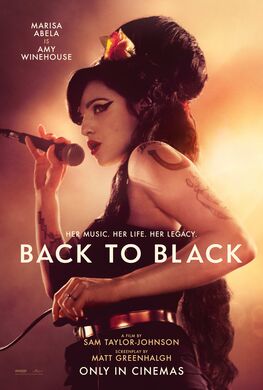 Amy Winehouse, "Back to Black" Amy Winehouse, "Back to Black" “We only said goodbye with words, I died a hundred times…” As a human being, I have been in the situation of feeling “He’s killed me…”. Amy Winehouse, played beautifully by Marisa Abela, speaks these words from her heart, feeling utterly abandoned by Blake, in the 2024 biographical film of her life, "Back to Black". Perhaps I’ve been in the other place too, of abandoning someone and leaving them feeling like I have killed them. Strong words… and yet, these things happen... people react, close their hearts and leave, and the people they leave also react, and feel destroyed. Amy speaks straight into these places of raw feeling and deep, unconscious reaction, with her heart fully engaged in her music. Through her music and life, we feel all the tragedy and waste, “me and my head high and my tears dry… get on without my guy… you went back to what you knew... I’ll go back to black…”, especially as her life spirals into addiction and early death. We watch as Amy tumbles headlong into the turmoil of her dreams for love, marriage, family and relationship with “her Blakey”, ultimately un-achievable and insurmountable. Bless Amy’s love for Blake, it’s a sacred love, and the pain she feels is universal. And all the time, there is something earlier that is underlying, seemingly buried by both the film and by Amy herself: the nagging reality, less romantic, of difficult relationships with close caregivers. Amy’s loss of her Nan, the intimate relationship with her Nan, cuts into her reality and Amy doesn’t seem to survive this. She disintegrates into her coping strategies, previously successful: sublimation into her music and displacement into her love for her Blakey. Amy’s Nan gently telling her, “oh, I’m sorry. You liked him, didn’t you?” And Amy, simply being heard, “Yes Nan, I quite liked him a very lot.”
0 Comments
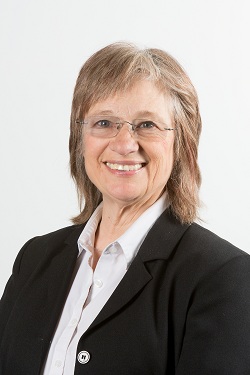 I sense the first signs of Spring emerging in our Wintery environment and I hope you can too! Our annual Spring Meeting will be held on Saturday 18th May 2024 at the Clayton Hotel, 27-29 Station Road, Cambridge CB1 2FB. The committee meeting, open to all ABMT members, will run, as usual, from 11.00 am to 1pm, and the Afternoon Session from 2 to 4pm. The whole of the day's events will be available on-line so if you would like to participate in this way, please let me know. The Afternoon Session will be open to non-members. Members are free, £20 for non-members. Our Speaker for the Afternoon Session this year will be Professor Helen Payne. Here is some preliminary information that Helen as sent us about the workshop: This workshop will provide a brief background to The BodyMind Approach for supporting people experiencing medically unexplained symptoms (with labels such as IBS, chronic fatigue, fibromyalgia etc.) for which all tests and scans come back normal. There will be open discussion and opportunities to engage in some experiential learning practices. 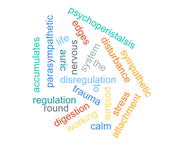 I've literally just come away from our ABMT autumn meeting with Sue Frazer which explored trauma and how to work with trauma. The session started with a sharing of what we thought trauma was and I thought it was helpful for Sue to use the definitions in Babette Rothchild’s book, The Body Remembers, to distinguish between different types of trauma:
Our Afternoon Session for members will be held on 4th November between 2pm and 4 pm at the Clayton Hotel, Station Road, Cambridge CB1 2FB. This workshop will be facilitated by psychotherapist and trainer, Sue Frazer, and aims to inform and explore further learning around trauma and massage. Many therapies both at complementary and psychotherapeutic level offer support for trauma recovery. Trauma is so often both explicitly and inexplicitly present in clients seeking help through therapy; the desire for deeper understanding of what shape trauma recovery takes, seems to be rising powerfully in the zeitgeist. Sue aims to update us in terms of content now taught on the biodynamic massage foundation course at Cambridge, and also to facilitate discussion among practitioners around what this work means for us: When and how touch can support recovery from post-traumatic stress, for example, and conversely when it may not be helpful for sufferers of post-traumatic stress disorder and complex trauma. This is a really big area and I would encourage you to come along if you can; there is much to be gained in terms of contacting and deepening awareness of the wider therapeutic picture. Could you let me know whether you can come, either in person or on-line: lindsey.nicholas@outlook.com The ABMT will be holding a workshop on Saturday 15th April at the Gestalt Centre, 15-23 St Pancras Way, London NW1 0PT. The session runs from 2pm – 4pm and will be facilitated by Gemma Ireland, who will encourage us to explore how we can deepen our understanding of working in the aura in biodynamic massage. Gemma is a biodynamic psychotherapist and trainer with many years’ experience, having trained initially with Gerda Boyesen. This workshop will be rich and informative in terms of learning; we aim to explore working with the aura being both in contact and outside the body; how it is possible to be in both places together working with the energy field.
For logistical reasons, we probably won’t be working on massage tables, so attendees are being asked to bring yoga mats, blankets etc; Gemma also says this work can also be explored sitting in chairs. This event is free to members of ABMT, and we are asking for a contribution of £20 for non-members. Please could you RSVP to Lindsey Nicholas: lindsey.nicholas@outlook.com, if you would like to attend. 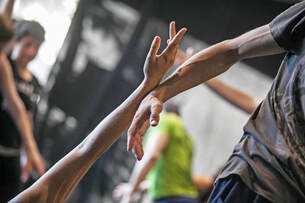 Led by Richard Parker for the ABMT 22nd October 2022 Richard hosted and led us in a two hour workshop which was attended in person in Cambridge, and online. This workshop took place in the afternoon of our ABMT Autumn meeting, 22nd October 2022. It was free to attend and open to non-members. Most striking for us as biodynamic bodywork and massage therapists, were the commonalities between contact improvisation and the methods we use for connecting in therapeutic work. Richard guided us in techniques which used “reaching” to make contact, and we were guided to a place of being present with ourselves and the other, while we were working with a partner. We were told to be observant of the breath, and the whole being, of ourselves and our partner. Richard told us to “see what was there” and that we were “seeing” though the touch. This is very much how we feel as biodynamic massage therapists, seeing or listening with our hands, as well as the rest of our senses. This CPD Session with dance practitioner, Richard Parker, will be held on Saturday, 22nd October 2022 from 2pm to 4 pm at the Gestalt Centre, London NW1 0PT. "An opportunity to explore the relational qualities of touch within a creative and dance-based practice called Contact Improvisation. Contact Improvisation is an embodied, meditative and profoundly connecting dance practice. It works with the principle of how we listen and communicate our intentions of co-creative movement through touch by awakening our whole body into tactile listening and presence. Within this workshop, we'll create a safe and playful container, using easy-to-follow exercises and movements to creatively explore some of the fundamental principles of how two or more bodies can move together as one within a spontaneously unfolding improvised contact dance. Richard Parker is passionate about the relational and profoundly human experience that can be revealed through Contact Improvisation (CI). He has been developing his skills and knowledge as a Contact Improvisation (CI) dancer since 2006. Over the years he has extensively trained with many internationally renowned teachers within CI including Karen Nelson, Lisa Nelson, KJ Holmes, Nita Little, Andrew Harwood, Ray Chung & Martin Keogh. Since 2011 he has shared his teaching of CI within Professional, Educational, Festival & Community Organisations as well as organised his own festivals, Retreats and Camps." This event is open to members and non-members of ABMT. Please contact lindsey.nicholas@outlook.com if you would like to attend. If you attended the conference, here's a book of words and images collected on and from the day to bring back memories. If you were unable to attend, some words and images to give you a flavour of an amazing event at King's College Cambridge in July where neuroscience, psychotherapy and biodynamic massage therapies came together to dialogue on touch. In Biodynamic work I have often been fascinated by the effects of grief and how it affects the body and the mind, and how it can guide us, often not very comfortably, to grow in a different direction. Actually one of the reasons I trained in Biodynamic work was through a client who could not jump. My client was unable to jump at all or leave the floor as her feet seemed almost magnetised to the ground. Over several sessions and exploring different ways to leave the floor we spoke more and though she was perplexed as to why this was occurring (remembering being rather good at jumping in ballet) she said her body had begun to feel completely differently over recent years. She then shared with me that two years ago her father had passed away. He had been her best friend and the glue and the anchor to the family. It got me very curious and I questioned that perhaps her inability to jump and physical capability was not just based around her physically fitness, but also reflected how her emotional body could affect her physiology. Was this grief restricting her from jumping and disconnecting her feet from the ground both literally and emotionally? Perhaps this was the time she needed stability and grounding after losing a person who was such a big part of her foundations. Those who have felt grief at some point in their lives can hold a place for it in their memories and in their bodies. It is experienced in different ways for different people and it has often paved the way for what comes next. Grief is a response to a loss of something we hold in a connective bond and though people often marry it with death of something or someone, grief can show its face in many different realms. Grieving for the home we have been torn from, grieving for the community we once had, grieving via touch, grieving for a part of our body that has been removed, environmental grief and grieving for a relationship that has broken down. Grief can show its face in many different realms Grief has many aspects and can manifest itself in many ways. Grief is a form of stress and indeed can affect our bodies at a physiological level. It can trigger adrenal fatigue by overwhelming our cortisol levels, making our bodies tired, making us feel lifeless, and can often result in in numbness and depression. Sleep patterns can be compromised, resulting in slow cognitive function. Some people need time away from others and will physically remove themselves from social gatherings. Others may respond physically, curling forward in the body so as to feel hidden and safe and protected. Grief can also manifest itself in anger, frustration, guilt and sorrow. In Dr Lam's article "The Effects of Grief on Your Body: Grief as Stress" (https://www.drlamcoaching.com/blog/effects-of-grief/), he says, "Chronic inflammation can be one of the effects of stress in the form of grief, and it can have many consequences on one’s health. Inflammation causes the gut lining to become more permeable. Because of this, harmful toxins can more easily enter the body and negatively affect the gut’s microbiome. As a result, immune function can also become compromised as well." Dr Lam states that grief can have such an intense effect on the body it can compromise the immune functioning, starting in the gut lining. The gut becomes more vulnerable to harmful toxins entering the body, and we, as a body and person in the world become more vulnerable. It is important for us to protect and nurture rather than punish ourselves. Mourning can seriously test your natural defence system Interestingly many Biodynamic clients I work with are often in a freeze state somewhere within their bodies and have become emotionally overwhelmed to the point that their bodies are searching for a resting place. This often manifests in a freeze state or a feeling of numbness. When our body holds onto such an intense and all-consuming felt sense it can then become imbalanced both emotionally and physically. Very often, by holding onto grief we may experience symptoms such as stomach pain, loss of appetite, intestinal upsets, sleep disturbances and loss of energy. Of all life's stresses, mourning can seriously test your natural defence systems. Existing illnesses may worsen or new conditions may develop. When we listen to the gut rumblings in Biodynamic work we are connecting with our inner body and life inside ourselves as well as a reminding ourselves that we have a body and it's ok as it is functioning. The rumblings also help identify where there is muscular tension and emotional holding and we work together on a nurturing journey to bring this inner space the attention where it needs it. Over time and through exploration in this practice it is also interesting to note that grief often shows itself hidden within the strong structural systems of the body such as the bones, muscles and connective tissues that help us keep upright and stable. One example of this is the serratus posterior superior, which is found deep between the borders of the scapula. This muscle also helps keep our shoulders back and has the psychological function of giving and receiving from the heart as our chest and heart are more open and forward facing to the world. In other cases grief has revealed itself between the ribs in the intercostal muscles that when used, inflate our chest, making us appear bigger than we are and perhaps bigger than we feel. These muscles help regulate breathing and have the psychological function of regulating space as well as containing emotions. Space is very important for growth. Without space, our roots can't grow and nourish themselves. When we open up the space within the intercostals we are are also creating a sense of vulnerability between ourselves and the world in terms of being seen; we are breathing into the world. When they experience grief some people want their space to be smaller and physically to make themselves smaller in the process. When attention is given to these areas it can also create different responses in the rest of the body as well. One very important factor in health, and even survival, is the ability of the body to maintain homeostasis – the equilibrium between different organs and systems. Stress is a threat to the maintenance of this homeostasis. Grief, though painful, has an important part in our growth in the world and also shows and teaches us a lot about our body. Grief in the body can become a very confusing, lonely and painful place to process but by connecting with ourselves and acknowledging and nurturing our felt senses, whether alone or with others, we are growing internally and returning to homeostasis. It is difficult to ignore what the world throws at all of us daily, and often confusing as to where to direct our feelings and emotions. Grief can be long and sometimes chronic but it is also important to remember that growth is always happening throughout this process. It can be slow and windy or fast and straight. For more information on help with grief there is a great website below: https://www.thegoodgrieftrust.org/ If you want to speak to me further in regard to exploring Biodynamic massage then email me: mirandabiodynamic@gmail.com Written by: Miranda Jankowska SATURDAY 9TH JULY 2022 9.30am-5.00pm. KINGS COLLEGE, CAMBRIDGE UNIVERSITY.Speaking and touching are two streams of communication which seamlessly interweave in daily relationships. Touch is a "language" in its own right and it can sometimes communicate more than words can say. The foundations for this are laid down prior to birth and afterwards. Communicating through touch is a way of relating in body psychotherapy. Body psychotherapists are trained to touch, have a touch lexicon, are skilled in its timely therapeutic use, and know how to observe and discuss the impact of touching with clients. Ways of touching are diverse and complex. Varying speed, rhythm, pressure and depth, focussing on different tissues of the body, touching skin to skin, through clothes and blankets, touching with finger tips, the palms of the hands, elbow to elbow are some of the possibilities. Through experience the skills and methods of touching become embedded in the psychotherapist and are pulled out of the practitioner, often intuitively, in a "dance" between client and therapist at appropriate moments. Unfortunately, other forms of psychotherapy have neglected therapeutic touching, usually have no training in it, and are often ambivalent about it. Discussions between psychotherapists of other modalities have tended to be somewhat limited and general, rather than exploratory and detailed. Until fairly recently neuroscience has also neglected research on touch, and concentrated on the other senses. However, there is now a burgeoning interest with papers being written on Affective Touch, mirror touch, vicarious tactile experience and so on. The importance of touch in infancy is also generating papers. In society generally the international Touch Test (2020) https://www.bbc.co.uk/mediacentre/latestnews/2020/the-touch-test-results has awakened touch as a topic for discussion and the social distancing of the Covid-19 pandemic has highlighted what it is like not to be able to touch others. We hope in this one-day conference to bring together body psychotherapists, psychotherapists from other modalities and neuroscientists to exchange ideas and dialogue with each other. Much remains unknown about touching therapeutically. What, for example, is happening from a neuroscientific perspective, when we touch in a particular way. Why is one form of touch more effective for some sorts of clients than others, why might touch be the first form of help for a particular client? SPEAKERS Professor Francis McGlone Losing Touch with Touch: It Will Cost Us Dearly Dr Natalie Bowling, Individual variability in touch attitudes and experiences. Dr Katarina Fotopoulou, The Neuroscience of Affective Touch: From the Lab to the Couch Tom Warnecke, Stirring the depths - reflections on touch in psychotherapy Gill Westland, Sue Frazer, Touch in Body Psychotherapy Dr Elya Steinberg, Dr David Tune, Courtenay Young Panel Presentation WHO IS THE DAY FOR? The day is intended for neuroscientists, psychotherapists, counsellors, and students of these disciplines. COST AND BOOKING £120.00 including beverages, and fork buffet in the Great Hall at King's College Please pay the full fee by Bank Transfer to: The Co-operative Bank Community Directplus Account Account title: CAMBRIDGE BODY PSYCHOTHERAPY CENTRE Sort Code: 089299 Account Number: 65264959 International Bank Account Number: GB89 CPBK 0892 9965 2649 59 Please use your name and CONF as the reference and let us know that you have booked. Please email: gillwestland@cbpc.org.uk We will confirm your place and send further details, when your payment has been received TRAVEL Kings College is in the centre of Cambridge. There is no onsite parking. There is also limited parking in the centre of Cambridge and it is expensive. Cambridge is easily accessible by train. From London, trains go regularly from Kings Cross and Liverpool Street. The postcode for King's College is CB2 1ST Written by: Gill Westland |
ABMT Blog
A safe place to educate, train and collaborate. Building our network and community. Blog Archives
April 2024
Categories
|
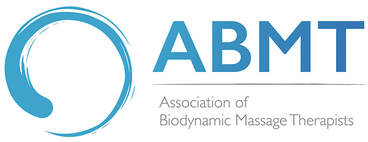
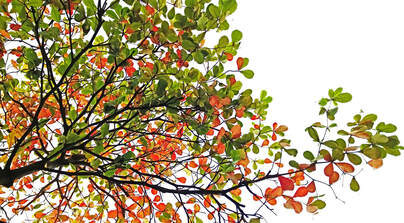
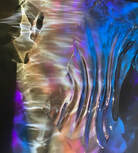
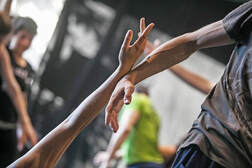
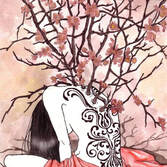
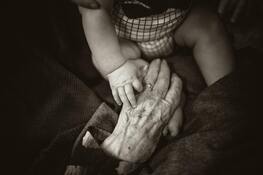
 RSS Feed
RSS Feed